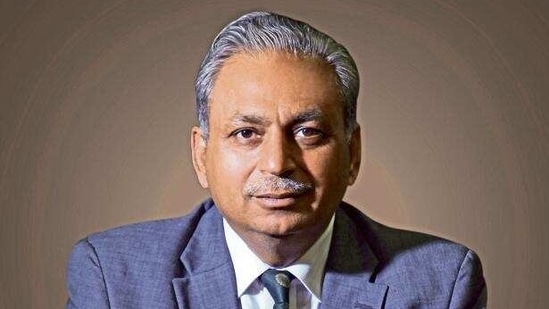‘Acquisitions are vital to Tech Mahindra’s strategy’
Tech Mahindra chief executive and managing director CP Gurnani shares his views on the demand environment, deal pipeline and inorganic growth strategy.
IT services major Tech Mahindra Ltd is betting on its NXT.NOW framework, which leverages emerging technologies to help clients with their digital transformation. Tech Mahindra has also acquired several companies to boost its offerings. In an interview, Tech Mahindra chief executive and managing director CP Gurnani shares his views on the demand environment, deal pipeline and inorganic growth strategy. Edited excerpts:

How is the demand environment shaping up?
The pandemic-induced new normal has witnessed an accelerated pace of technology adoption. The demand for the global tech market is increasing and, with vaccination in place and businesses reopening, we expect the demand and growth environment to pick up. The demand trajectory for new-age technologies like artificial intelligence (AI), cloud, cyber-security, data and analytics, continues to grow. Also, with 5G and its wide array of use-cases, we believe that business models will become more digitally equipped, customer-centric and data-driven. In all, we are positive in terms of the outlook of the business going into FY22.
Given Tech Mahindra’s recent acquisitions, what’s the strategy going forward?
Mergers and acquisitions are a vital part of our business strategy. Forming meaningful alliances help us in enhancing our service offerings, enabling us to emerge as a ‘partner of choice’. Earlier this week, we acquired a majority stake in Perigord Asset Holdings Ltd, a specialist in end-to-end packaging supply chain solutions to the life sciences industry. Other recent acquisitions include 100% equity in Momenton, a digital enterprise technology firm; and Tenzing Ltd, a technology consulting company to enable digital capabilities and modern cloud-based architecture for customers in the ANZ (Australia and New Zealand) region, specifically for financial services. These acquisitions are in line with our strategy to strengthen our digital capabilities and offer our clients end-to-end transformation services. This will significantly enhance our local presence in the markets and create significant synergies which can help bring next-generation solutions to customers.
Do you continue to see pricing pressure in some sectors? How do you see the trend panning out in the future?
While covid-19 has been devastating for humanity in general, it has, at the same time, also opened up a plethora of opportunities for implementation of digital technologies across sectors. We have seen a greater acceleration in organizations transforming themselves digitally with a focus on customer experience. The sense of urgency from clients has expedited the demand market, and we are seeing a strong traction in some of the new-age technologies. Keeping up with this trend, we expect overall spending towards new-age technology to continue in the medium term, thereby mitigating the pricing pressures.
How is your deal pipeline, and what type and size of deals are these?
Demand environment and traction in global markets continue to be strong, especially for digital transformation and enterprise modernization services. Owing to the sustained momentum in global business demands, our deal pipeline has expanded in scale, and our net new deal win contract value is already equal to our pre-covid contract value. Considering our overall network business, our 5G component continues to increase – both in terms of funnel, as well as in terms of the percentage of revenue as part of the overall network business.
What’s the future of digital business, and what are the key drivers?
The demand trends we are gauging are largely in digital, with the online model of work rapidly gaining momentum, operations now being run from ‘anywhere’, and the increased migration of assets to the cloud. As part of our NXT.NOW framework, which aims to enhance ‘human-centric experience’, we are heavily focused on investing in emerging technologies and solutions that enable digital transformation and meet the evolving needs of the customer. The ongoing digital-first and data-driven approach will continue to be a business imperative in the future as well.
Customers too are focusing on accelerating their digital strategy, which includes remote working, cloud strategy, and security. We believe many of these digital shifts have already been injected into the new normal, which will form the DNA of Generation-Z.
How does the future of the workplace look like at Tech Mahindra?
Employees have started returning to offices but in a staggered manner. Currently, only 10-12% of our associates are working from the office. In the long term, we expect around 25-30% of our associates to continue working from home on an ongoing basis.






